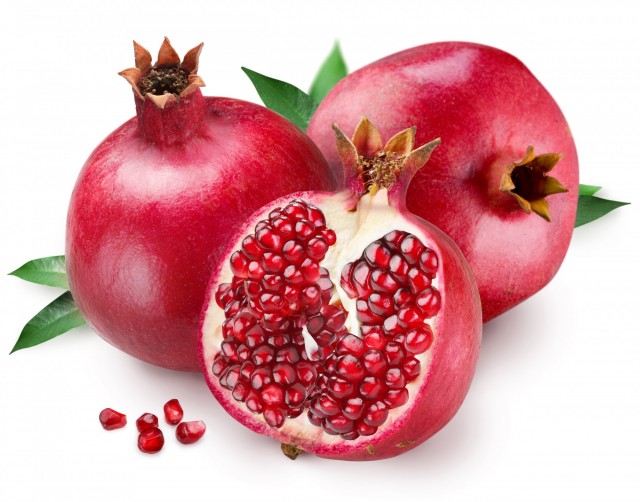The pomegranate has been a much loved part of the diet of many cultures for thousands of years, and scientists have recently begun to take a look at its possible health benefits, over and above those derived from the vitamins and minerals it contains. Some studies have suggested that the juice of the pomegranate contains nearly three times the antioxidants found in such foods as green tea and red wine. In addition, the pomegranate contains substantial quantities of such important minerals as potassium, such important vitamins as vitamin C and niacin, and significant amounts of fiber as well.
Traditional uses of the pomegranate
The pomegranate has long been used in traditional folk medicine to treat a variety of ailments, including sort throat, inflammation and rheumatism. These folk uses of the pomegranate are common throughout the Middle East, Iran and India, where the fruit is common.
The pomegranate has a touch rind which is either dark red or brownish in color, and it is similar in size to an apple or an orange. The edible part of the pomegranate is the juicy red pulp.
The history of the pomegranate
The name pomegranate is derived from the Latin term for “fruit of many seeds”, due to the many seeds the interior of the fruit hold. From ancient times onwards, the pomegranate has been associated with fertility, and this fruit often makes appearances in the folklore of ancient Egypt and in Greek mythology as well.
Eating a pomegranate can be a labor intensive experience, as the edible seeds must be eaten one at a time to avoid the bitter membrane that encases them. There are a number of varieties of pomegranate available throughout the world, and one of the best ways to distinguish between these types is by the color of the seeds, which range from light red and dark pink through a deep scarlet color.
What to look for
When buying pomegranates, it is best to choose those with the best color, and those which feel heavy. Pomegranates that are dry looking and wrinkled, or which have a cracked rink, should be avoided. Pomegranates will keep at room temperature for two or three days, and in the refrigerator for up to three months.
In most parts of the United States, the pomegranate is typically available from September through November. Availability of fresh pomegranates varies by region of the country, however.
A typical pomegranate contains only about 100 calories, making an excellent food for dieters. Most nutrition experts recommend eating at least five servings of fruits and vegetables per day, and pomegranates are an excellent addition to anyone’s daily diet.
In addition to fresh pomegranates, pomegranate juice is another popular way to enjoy this popular fruit. Pomegranate juice can be used to make a wide variety of products, including jellies, sauces, marinades and vinaigrettes. In addition, the seeds of the pomegranate are often sprinkled over salads and desserts, or used to garnish meats, poultry and fish.





